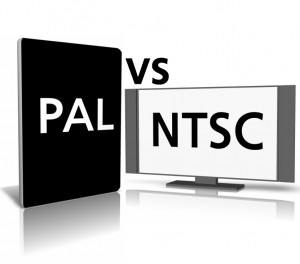NTSC, PAL and SECAM are the three main television standards used throughout the world.
NTSC is the oldest existing broadcast standard. It is short for National Television Standards Committee which was developed in the US and first used in 1954. NTSC consists of 525 horizontal lines of display and 60 vertical lines. NTSC M is the only type exists today.

PAL stands for Phase Alternating Line. It was developed in Germany and first used in 1967. PAL is a variant of NTSC. PAL uses a 625/50-line display. Different types use different video bandwidth and audio carrier specifications. Common types are B, G, and H. Less common types include D, I, K, N, and M. These different types are generally not compatible with one another.
SECAM is short for Système Électronique pour Couleur avec Mèmoire. It was developed in France and first used in 1967. It uses a 625-line vertical, 50-line horizontal display. SECAM though is not as popular as the other two types of television signal standards.
To see Television Standards by Country, you can visit this URL: http://countrycode.org/tv-standards
